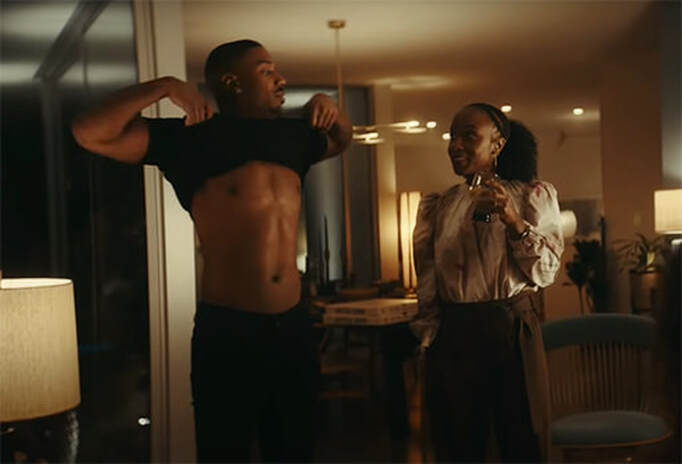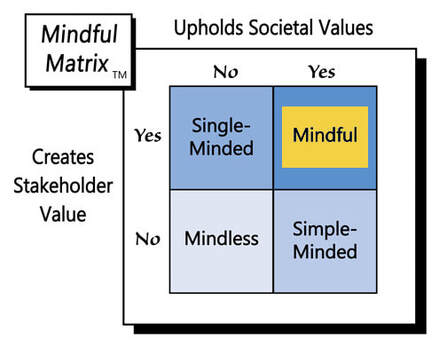author of Honorable Influence - founder of Mindful Marketing
Before the recent big game, a friend graciously invited my analysis of the ads—You don’t have to ask twice for my opinion on advertising, especially Super Bowl commercials, so I shared thoughts about one particular ad that seemed strange.
Toyota’s “Upstream” commercial featured the adoption story of Jessica Long, a 13-time gold-medal-winning Paralympic swimmer. Long’s rise to success despite severe adversity was inspiring; however, there was also something unsettling about the ad.
Pushing against the positive verbal messages of parental love and athletic achievement was a literal stream of cold, dark water that ran through every scene, including the family’s home and other indoor places. That’s a disconcerting sight that can cause anguish for anyone, especially those who have experienced floods in their home, school, or work.
The negative visual of flood water worked against the ad’s affirmative verbal messages, significantly diluting the positive affect Toyota likely wanted for its ad, and making it “Simple-Minded Marketing.” The automaker certainly had good intentions, but I doubt the inadvertently somber spot did much to boost the company’s brand.
I remembered this ad partly because of its unpleasant aftertaste but also because I’ve studied such verbal-visual disconnects before. Several years ago, I did research on the same phenomenon found in pharmaceutical ads, which are probably the worst offenders when it comes to sending mixed commercial messages.
When we watch a prescription drug ad, we usually hear a list of the medication’s side effects, which the Food and Drug Administration (FDA) mandates. However, as a narrator recites those potential negative outcomes, the commercial often shows very pleasant visuals, like the ones seen in this ad for Lipitor. At about 33 seconds into the spot, a narrator starts to quickly read several serious warnings:
“Lipitor is not for everyone, including people with liver problems and women who are nursing or pregnant or may become pregnant. You need simple blood tests to check for liver problems. Tell your doctor if you are taking other medications or if you have muscle pain or weakness. This may be the sign of a rare or serious side effect.”
Ironically, the visual backdrop for these weighty words is a guy and his dog taking a pleasant walk through the woods and later jumping into a lake for some swimming fun. Yes, we hear the side effects in such ads, but are we really listening to and understanding their gravity, given that very positive visual scenes distract us from those negative verbal messages?
That’s the question I set out to answer through research that began with a group of students in an Advertising Ethics class I was teaching. In a controlled empirical study that involved commercials for fictitious pharmaceuticals, we found that people do indeed discount drugs’ negative side effects when shown positive “dissonant” visuals at the same time.
I presented those findings at the American Marketing Association’s Marketing & Public Policy Conference in Washington, D.C., where a member of the FDA commended the research and asked for a copy of the presentation. Health Marketing Quarterly later published the study.
So, one “Simple-Minded” Super Bowl ad failed to make effective use of reinforcing, or “redundant,” visuals—no big deal. Actually, several other $5.5 million+ spots made the same mistake in similar ways and in doing so conveniently completed the other three quadrants of the Mindful Matrix:
“Alexa’s Body” - Amazon claimed the steamiest spot in this year’s Super Bowl. For nearly sixty seconds, a female Amazon employee fantasized about handsome Black Panther star Michael B. Jordan, who replaced the smart speaker in her lustful daydreams, which included Jordan removing his shirt and joining her in a bubble bath for two.
The commercial was uncomfortable to watch in mixed company and may have posed problems for parents, but the real issue was the spot’s repeated sexual objectification of Jordan. Role-reversal (a woman mentally undressing a man) may have seemed funny, but no one should be reduced to their body parts or have their personhood downgraded to a “vessel.” Similarly, it’s dangerous to objectify men as doing so suggests that it’s also okay to objectify women.
The ad involved dissonant visuals in that images of a sexy superstar have nothing to do with voice commands about ‘the number of tablespoons in a cup’ or ‘turning on the sprinklers.’ The pairing of an A-list celebrity with Alexa probably has helped keep Amazon’s smart speaker top-of-mind, but all the gratuitous sexual innuendo made the ad “Single-Minded Marketing.”
“Happy” - In its “Ultra” light beer ad, Michelob employed an entire lineup of past and present all-star athletes. For instance, there were still shots and/or video clips of Serena Williams, Mia Hamm, Anthony Davis, Usain Bolt, Billy Jean King, Arnold Palmer, Wilt Chamberlain, Jimmy Butler, Peyton Manning, and more.
I wonder whether Michelob got permission from all these athletes, or their estates, to associate their images with its brand, but assuming it did, there’s still another problem that directly involves dissonant visuals: People don’t ascend to those kinds of athletic heights by downing much beer. There’s little to suggest that alcohol enhances athletic performance; in fact, alcohol has exactly the opposite effect: It reduces aerobic efficiency, impairs motor skills, decreases strength, disrupts sleep, and slows recovery.
Michelob’s suggestion that happiness helps athletes win may have some truth to it, but there’s clearly much more to athletic achievement, namely physical and mental discipline both of which alcohol easily impairs. For that reason, it was irresponsible of Michelob to show images of athletes in uniform, on their courts, fields, etc., along with alcohol-friendly soundbites such as, “fueling the run toward greatness” and “something more vital.”
How ironic and tragic it was that Kansas City Chief’s outside linebacker coach Brit Reid, son of head coach Andy Reid, caused a multi-vehicle accident days before Super Bowl, apparently due to alcohol impairment. The accident caused him to miss the game and left a young girl fighting for her life. Alcohol and athletics definitely don’t mix, and it’s doubtful that such precarious positioning will give Michelob’s brand much boost, which makes the beermaker’s ad “Mindless Marketing.”
“Get Back to Nature” - After the three commercials just described, it’s easy to be suspicious of all Super Bowl spots, believing that most played with consumers’ minds and sacrificed social mores. Thankfully however, the preceding ads were exceptions. Most of the commercials employed redundant, not dissonant, visuals that appropriately reinforced their verbal messages.
One of the best examples of such visual-verbal consistency was Bass Pro Shops and Cabela’s 60-second spot that featured clips of ordinary people planning for and enjoying beautiful places in the great outdoors while hiking, fishing, camping, and more.
Sprinkled into some scenes was gear that one could probably purchase from the outfitter, but none of the product placement was overdone; rather, all subtly and artfully supported the simple call to experience nature. Consequently, viewers were likely both to remember the firm’s ‘enjoy the outdoors’ value proposition and to believe its closing promise, “We’re there for you.”
Bass Pro Shops and Cabela’s commercial wasn’t the only advertiser to hit a home run in terms of verbal-visual consistency that was both effective and ethical. A couple of other best-practices ads belonged to Huggies for “Welcome to the World, Baby” and to Indeed for “The Rising.”
A wink is the epitome of a dissonant visual—it slyly states, “Don’t believe what I’m saying.” Advertisers shouldn’t ‘wink’ with their ads, i.e., use dissonant visuals that contradict their spots’ verbal messages. Instead, commercials should enlist strategically-chosen redundant visuals that reinforce the right verbal messages. In Super Bowl ads and in other communication, that consistency makes for “Mindful Marketing.”
Learn more about the Mindful Matrix.
Check out Mindful Marketing Ads and Vote your Mind!








 RSS Feed
RSS Feed